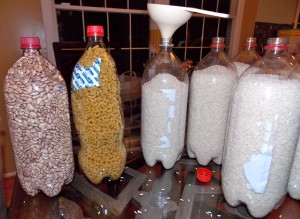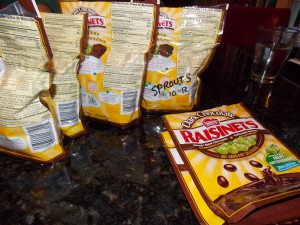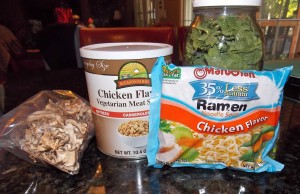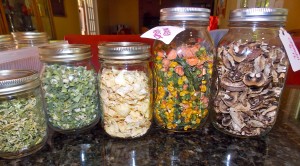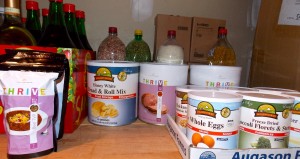The military received a 1% pay raise this year. But with a 2% tax increase, that is the same as a 1% pay cut. I am thankful to report that while this did infuriate me, we were able to absorb the loss with minimal discomfort. Sequestration hit right about the time that we were re-arranging our house to accommodate the two kids we are planning to adopt. While I had been busy spending to get ready for a larger family (beds, linens, 2nd fridge, etc.), some of our friends who are federally employed were getting furlough notices. Our one friend is being furloughed to the tune of a 12% pay cut. With a new mortgage and small children at home, I hope that they can weather the storm. Other friends are being forced to retire early from the military because they are not at the top of their fields and the military needs a drastic reduction in forces. We are lucky in that my husband has a secure job, with a promotion on the horizon, and he is not at risk of a forced retirement. But it is a stark reminder that you can never be financially prepared ENOUGH to survive what life might throw at you.
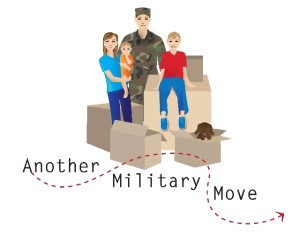 In addition to all of the sequestration drama, I was reminded recently that we will be facing our next set of military orders to move, sometime in the next year, probably moving in about 16 months . We usually know about 4-6 months prior to our moves (sometimes we know as early as a year in advance), which will allow us time to get our lives ready for the next big adventure. Those months leading up to finding out our next duty station is always filled with speculation about where we will go, how we will get there, etc., and a few times we have been utterly surprised by where the Marine Corps has chosen to send us. For us, this will be the first time that we have moved since beginning a long term food storage program. While the movers will pack food in containers for moves within the U.S., it counts against our overall weight allowance. Foods are typically discouraged on international moves. This will be complicated for us because we will be moving a much larger household than ever before, and there is always the possibility of another international move. After rearranging our storage areas to accommodate the 2nd fridge last weekend, my husband raised the white flag and told me I needed to lay off the food storage (I believe the word “hoarder” may have been mumbled). He said I needed to develop a plan to deal with all this food for our next move. I think in his mind he was envisioning us having to throw out hundreds of pounds of food. Of course in my mind, I am more concerned with our increasing family size and feel the need to store more, but I can see his point.
In addition to all of the sequestration drama, I was reminded recently that we will be facing our next set of military orders to move, sometime in the next year, probably moving in about 16 months . We usually know about 4-6 months prior to our moves (sometimes we know as early as a year in advance), which will allow us time to get our lives ready for the next big adventure. Those months leading up to finding out our next duty station is always filled with speculation about where we will go, how we will get there, etc., and a few times we have been utterly surprised by where the Marine Corps has chosen to send us. For us, this will be the first time that we have moved since beginning a long term food storage program. While the movers will pack food in containers for moves within the U.S., it counts against our overall weight allowance. Foods are typically discouraged on international moves. This will be complicated for us because we will be moving a much larger household than ever before, and there is always the possibility of another international move. After rearranging our storage areas to accommodate the 2nd fridge last weekend, my husband raised the white flag and told me I needed to lay off the food storage (I believe the word “hoarder” may have been mumbled). He said I needed to develop a plan to deal with all this food for our next move. I think in his mind he was envisioning us having to throw out hundreds of pounds of food. Of course in my mind, I am more concerned with our increasing family size and feel the need to store more, but I can see his point.
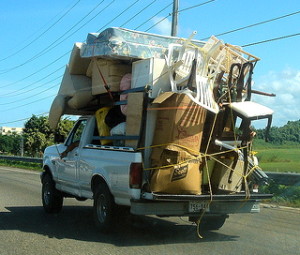 We have both compromised and developed a plan. All future food storage purchases (in our current location) will need to be for our regular food storage pantry that we routinely eat from. No more long term storage food purchases until we reach our next duty station. The mylar and bucket food storage will be moved with our household goods (unless we are headed overseas and are limited on weight). Once we know where/when we are moving we will begin eating from our easy access long term food storage that I have in 2-liter bottles (see previous article on storage containers). These are containers and food items that are easy to replace once we are relocated. When they come to move us, any surplus pantry items in original containers may then be donated to the local food pantry. I consider this a workable solution that we can both live with, and he promised not to use the word hoarder again.
We have both compromised and developed a plan. All future food storage purchases (in our current location) will need to be for our regular food storage pantry that we routinely eat from. No more long term storage food purchases until we reach our next duty station. The mylar and bucket food storage will be moved with our household goods (unless we are headed overseas and are limited on weight). Once we know where/when we are moving we will begin eating from our easy access long term food storage that I have in 2-liter bottles (see previous article on storage containers). These are containers and food items that are easy to replace once we are relocated. When they come to move us, any surplus pantry items in original containers may then be donated to the local food pantry. I consider this a workable solution that we can both live with, and he promised not to use the word hoarder again.
Has anyone else ever had to deal with moving a great distance with their long term food storage? Any tips or suggestions?

